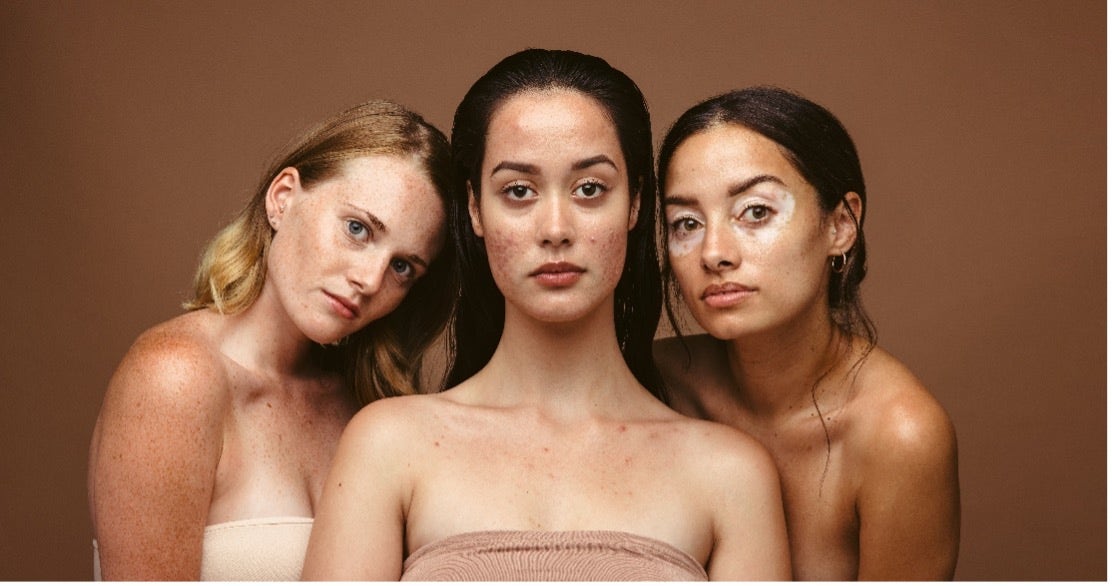While acne is most common on your face, it’s not unusual for it to affect your body too—we know, the gift that keeps on giving, right?
The root causes of body acne are the same as those that cause acne on your face. But there are some different triggers to think about, and the skin on your body is often thicker, so you might find you need to try something different to tackle body acne.
The good news is that in our Hero Pimple Patches, we’ve got all the tools you need to tackle body acne (as well as facial acne) and get your skin feeling great again.
What causes body acne?
Like acne on your face, body acne breakouts happen as a result of excess oil or sebum being produced. This mixes with dead skin cells (grim) and leads to clogged pores. When bacteria get trapped, inflammation strikes—and hello, breakout!
We have pores all over our bodies, even though they are most noticeable on our faces because the sebaceous glands—tiny glands near the surface of the skin—on your face are bigger. Go on, have a look (we’ll wait).
There are more sebaceous glands on the upper half of your body, which is why you’re more likely to notice acne on your chest or back (also known as bacne). But you can get spots and pimples anywhere—buttne anyone? Yes, it’s a thing!
What is the difference between acne on your face and acne on your body?
Many of the triggers for acne are the same whether it appears on your face or your body. According to our dermatologist expert Dr Sonia Khorana, those can include hormones, hair products, medicines, gym supplements, stress, genetics, and eating a diet with a lot of high-glycaemic index foods.
One of the main differences is that acne on your body can often be caused by sweat. And they say exercise is good for you!
We are, of course, joking, as exercise is very good for you in lots of ways—but clothing rubbing against the skin while jogging (for example) can actually make acne on your body worse too. It’s called acne mechanica, which is a type of acne caused by friction or pressure on the skin (and, disappointingly, nothing to do with robots).
What can you do to try to prevent body acne?

Sometimes, acne just happens—but it’s certainly possible to reduce the effects that sweat can have on your skin, and to remove some of the friction that can make your body acne worse.
Top of the list is making sure that you get out of your sweaty clothes and take a shower as soon as you can after you’ve finished exercising—so the sweat and bacteria don’t sit on your skin for any longer than necessary. You should also wear breathable fabrics when you work out, like wicking, and should avoid really tight compression clothing if you’re mid-breakout, as this can increase friction. It also helps to wash your sheets, towels and clothes regularly. But, as we said, acne can’t always be avoided—which is where hydrocolloid patches come in.
What are hydrocolloid patches?
According to Dr Sonia, hydrocolloid patches (like Hero Pimple Patches) are moisture-retentive and fluid-absorbing dressings that soak up pus or oil and sebum from spots and pimples to form a hydrated gel over the wound.
She explains: ‘This creates a moist environment that promotes healing and protects the skin at the same time, which is key for preventing scarring and speeding up healing time!’.
‘Basically, it’s great for people who pick at their spots because it’s going to stop them from doing exactly that!’
A timely reminder that—whether your breakout is on your face or body—you should never pick, pop or squeeze your spots as it can cause infection and scarring. Let hydrocolloid patches be your Hero (see what we did there?).
How can Hero Pimple Patches help?
Hero Mighty Patch Surface are going to be your BFF if you’re dealing with an acne breakout on your body. They’re a lot bigger than your average hydrocolloid patches—10 times larger than our standard patches—and size really matters when you’re trying to get the better of body acne. Ideal for covering larger blemishes on the back, neck, chest or bum, they are fine to be used on your face too.
Just like the rest of our range, they’re dermatologically tested, suitable for all skin types (including sensitive skin) and made from medical-grade hydrocolloid.
Hero Pimple Patches are safe to use with other acne treatments, and they’ll stop you squeezing your spots—which should also help your skin heal sooner. You’re welcome!

